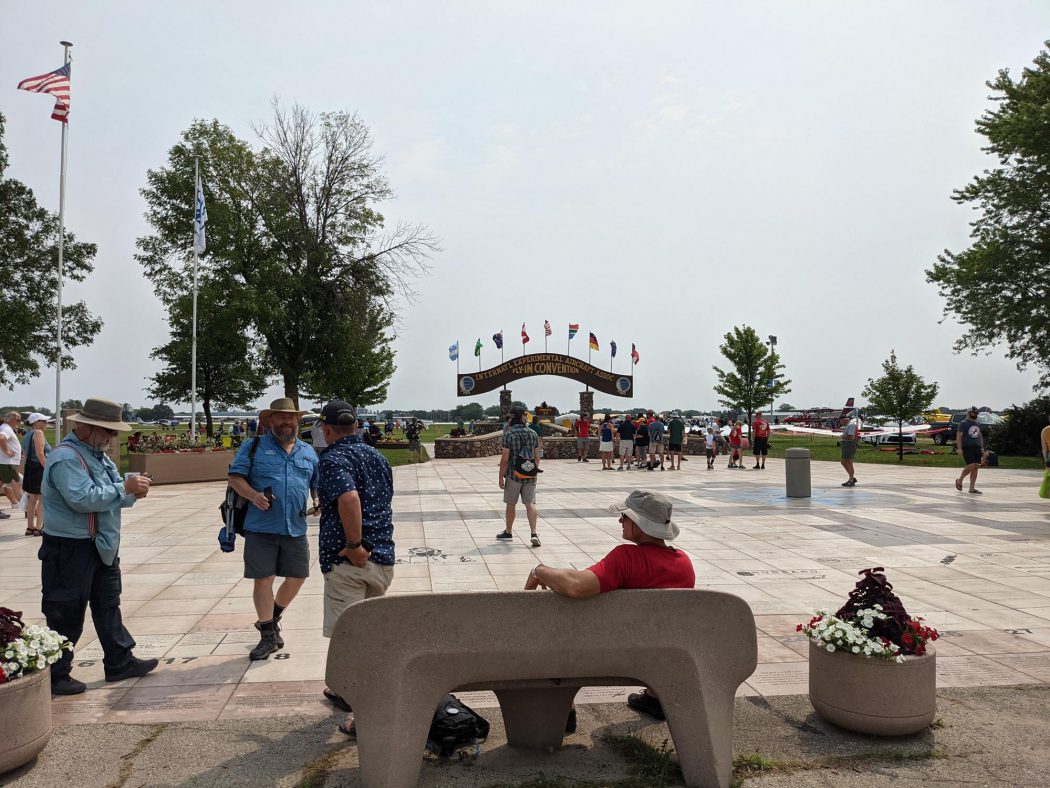I sucked from the fire hose the engine information presented at Airventure this year. Mike Busch put on 13 seminars and I think I hit five or maybe it was six of them. I also took in a leaning seminar presented by Martin Pauly. And a great presentation by Vic Syracuse specific to amateur built aircraft (I was able to get some RV-10 specific questions asked). This is my effort to summarize what I learned:
Leaning
Taxi
Lean to peak RPM, this is critical to engine life
Climb out
Avoid red box, keep the mixture rich enough for takeoff
During climb lean the mixture to keep the EGTs at about the same temperature that you see when leaned in cruise for ROP operation
Cruise
Below 60% power the red box disappears and you can run at any mixture without damage to engine
Quickly lean to engine roughness then enrichen a bit until smooth
With the engine running smoothly, you can fine tune the mixture by watching the fuel totalizer until you get the best MPG
When flying 13,000+ msl it is okay to lean to the peak EGT
Approach/Landing
Don’t go full rich on final, it is hard on the engine
For reference:
1. CHT temperatures are our best indicator of cylinder pressure
2. With lean of peak operation, focus on keeping the CHT temperatures in the acceptable range
3. Lean of peak operation should be at 20-80 degrees lean (based on LAST cylinder to peak)
4. There is no need to know peak EGT. But if you must know it, get lean of peak and enrichen until you find the peak (from the lean side NOT the rich side of peak)
5. If engine is working properly, the last cylinder to peak should always be the same cylinder number every time
Cylinder Heat Temperatures (CHT)
Lycoming, good range is 350-400 CHT, with a maximum of 420 (Vic follows Lycoming recommendation of 435)
On descent, shock cooling is 30 degrees CHT cooling per minute (Lycoming says 60 degrees is acceptable), program a warning in the avionics if more than 30 degrees per minute is detected
In a follow up Vansairforce forum post Vic provided some additional information:
1. If CHTs are too high first check ignition timing
2. Add washer to cylinder 5 baffling between the rear screw and the baffling and opened up baffling on number 6
3. Keep holes into the bottom part of the cowling to a minimum
Engine issues
Both EGT and CHT go up/down together this is a fuel issue
CHT goes up And EGT goes down is indicates ignition issue
If a magneto is mis-timed, CHT through the roof and the EGT very low
Thermal Runaway – 1 degree per second CHT rise. Immediately!!! power to idle, add power back in after temperature is below 410 to sustain flight and land ASAP
Annual timing drift 0.5-1.0 degree is typical
When timing the mags, better to retard ignition if in doubt. (i.e. go from 25 degrees BTDC to 24 degrees BTDC)
Oil
Cut open oil filter (use a new hacksaw blade to cut filter material), stretch out of newspaper and leave overnight, then look for metal particles
Should be:
1. No large metal (spec less than 1/16″)
2. Acceptable are numerous small metal pieces totaling 1/4 teaspoon or less BUT if metal is found reduce oil change interval to 10 hours (if clear go to 25 hours and if still clear return to 50 oil interval)
Pull oil suction screen with every oil change
Use Camguard (normal 5% of oil total and if pickling engine go to 10%)
Oil burn in an IO-540 of 1 qt every 12-15 hours is good
Injector Tuning
GAMI test results: 0.1-0.2 gal per hour is ideal, 0.5 gal per hour is typical, and 1.5 gal per hour is bad
Borescope
Borescope anytime spark plugs are removed, or every 50 hours, no more than every 125 hours
Looking for symmetry of valves and see cross hatch on cylinder walls (vertical scoring bad)
AOPA chart illustrating valve conditions
Induction System
Replace intake gaskets and hoses at 300 hours (regardless of age)
Blue tint on metal induction intake tubes indicate washers have failed (or nuts are too loose)
If rougher at idle/taxi, turn on fuel pump which may smooth it out if there is an induction issue
Fuel Flow
Quick test, set power at 24 squared, cruise flight and FULL RICH, and make a note of the EGT value
Pull mixture back slowly until the engine stumbles
Increase should be 175-250 degrees on the EGT
If EGT rise is not in this range then it is set up too lean (could be the injectors or the main nozzles)
RV-10 Specific
Wheel pant bolts need Nord-Lock washers or safety wire
Propeller overhaul, 10 years is okay (6 years is recommended by Hartzell)
Oil breather tube exit position is often incorrectly located check the plans
Cylinder 3 and 4 run cooler than others, use aluminum tape to bring those cylinders up to match the others then make fiberglass parts once the shape is determined

No Comments